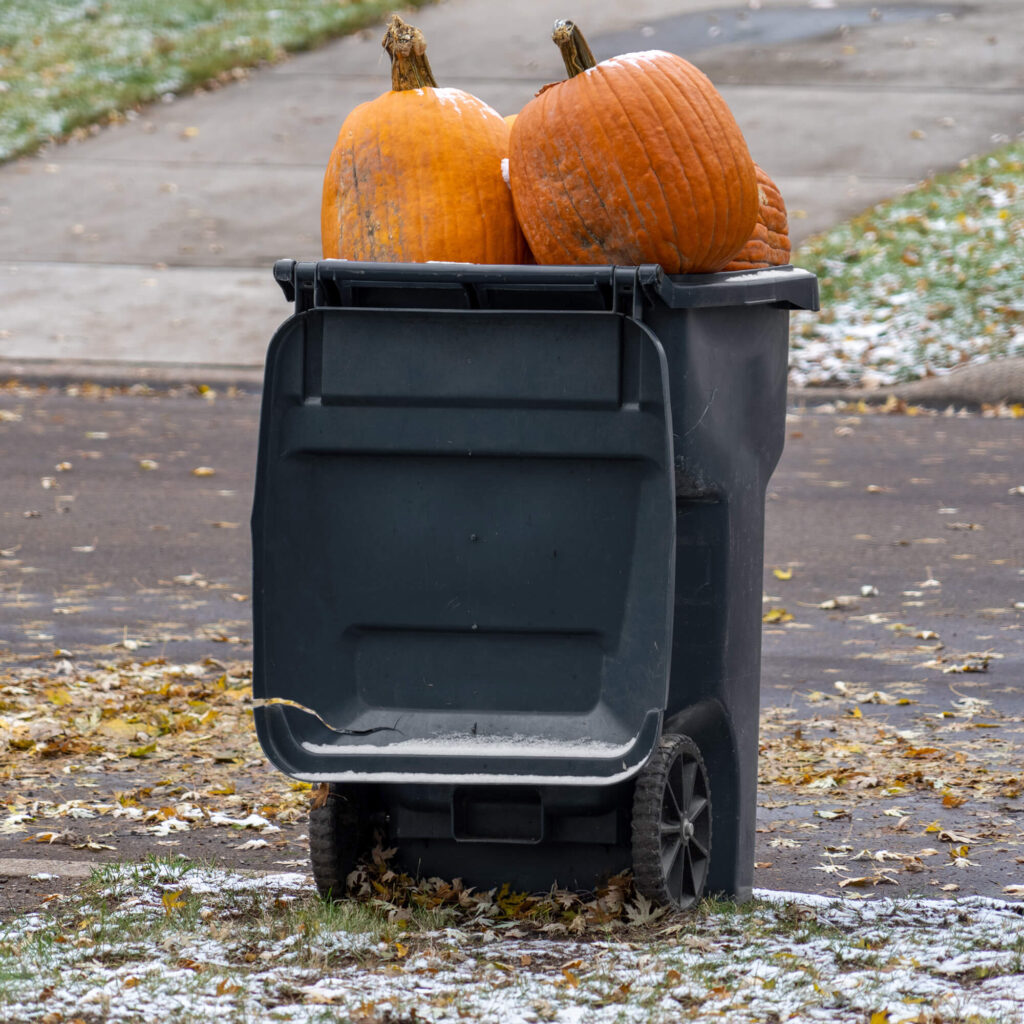
How to compost pumpkins, yard waste, and more
It’s fall in Minnesota! That means crisp days, changing colors, apple orchards, and the occasional Halloween blizzard (looking at you, 1991). While spooky season might be in full swing, one thing you don’t need to be afraid of is the rich opportunity fall composting provides. Read below for some simple tricks and tips you can do today to clean up your yard and contribute to a sustainable, healthy environment.
Halloween pumpkins
In Minnesota it’s a tradition—or maybe a precaution—to add a winter jacket to your Halloween costume ensemble. While this might be unique to Minnesota and other states in the north Midwest, there is one Halloween tradition that is nearly universal across America—jack ‘o’ lantern carving! In fact, nearly 44% of Americans plan to buy and carve a pumpkin this year.
But what happens to all those pumpkins on November 1 that don’t get smashed by some kids having fun on Halloween night? More than likely, those spooky, festive pumpkins will end up in the trash—adding to the nearly 70 million tons of yard trimmings and food waste Americans generate each year. There’s another option though! Turn your jack-o-lanterns into something useful—like compost for your garden.
The process to do this is pretty easy:
- Start by removing any candles, wax, or other “human made” products that have been put on or in the pumpkin, such as: lights, candles, glitter, paints or markers. Cutting the pumpkin skin off these areas and putting them in the trash is best for the environment and your compost.
- If you don’t already have a compost pile, simply find a shaded spot near your garden to place your pumpkin.
- Once you’ve found a home for your old jack-o-lantern, smash it up! Breaking the pumpkin into smaller pieces will help increase its surface coverage and help it compost faster.
- Finally, cover your pumpkin with a loose pile of leaves and turn every few weeks for your pumpkin to be magically transformed into nutrient rich compost. This may take 3-6 months depending on how hot your pile stays through the winter months. Spread this mixture around the plants in your garden in the spring for a great soil amendment that can add nutrients for your plants.
For an even easier option to dispose of your pumpkin, it can be combined with your yard waste or put in your organics bin and brought to a compost site like ours! You still need to remove any human made products to protect our finished compost.
If you’re interested in how else you can sustainably reuse or repurpose your food or yard waste, please visit setmn.com/services/organics-recovery.
Other yard waste
If pumpkins aren’t enough and you’re looking to do a full yard clean up before winter, add gathering leaves and grass clippings to your list of compostable items. The changing leaves and colors are a beloved aspect of the fall season; however, what do you do with all those fallen leaves, dying annuals, and extra glass clippings? Compost them of course!
- Leaves are a valuable compost material because they are carbon-rich and easily added to compost piles.
- Leftover fresh grass clippings are nitrogen-rich compost activators. Add this material to your compost pile in thin layers or mix with leaves and other “browns” to prevent matting.
- If you’ve planted annuals or cut back perennials in your garden that have finished fruiting or flowering you can also set those aside for composting. Make sure to avoid adding any plants that have disease or mold problems. This can impact the quality of your compost..
Once you’ve gathered all your materials, separate them into two piles alongside your compost bin. One pile dedicated to coarse materials such as stalks, dying annuals, branches, shrub prunings, etc. The other pile should be dedicated to finer materials such as leaves and grass clippings. As you begin adding things to your compost bin, make sure to keep combining the finer materials with the coarser materials to ensure a good mix. Well-mixed materials will help speed up the composting process.
If you don’t have time for all that mixing, monitoring and turning of your compost bin, bring them to SET and The Mulch Store for composting! We mix and heat piles to temperatures over 131 degrees to kill pathogens, weed seeds or invasive species like jumping worms. We will have it processed and turned into a wonderful nutrient rich soil amendment by spring!
Want to learn more about the benefits of compositing? Check out our Compost 101 post for answers to common Minnesota mulch questions.
SET has answers for all your compost questions: